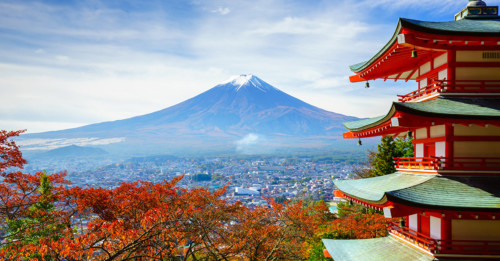Japanese Whisky Essential Info
- Color: Pales straw gold to rich amber
- Region: Japan
- ABV: Varies, 40% ABV, comparable to Scotch
- Aged: Yes, in wood casks, can be aged in Japanese Mizunara oak
- Made from: Malted barley and other grains
- Commercial Examples: Yamazaki, Yoichi, Hakushu, Chichibu, Shinshu, White Oak
- Popular Cocktails: Japanese whisky can be used in many whisk(e)y cocktails; just substitute according to the style
There’s a reason Japanese whisky is spelled, like Scotch, without the “e.” It was inspired by, and still takes after, Scotch whisky. A burgeoning, and rapidly excelling, market, Japanese whisky really began with one guy—Masataka Taketsuru, a Japanese national who went to Scotland to study organic chemistry in 1918, and instead fell in love with Scotch production.
Which, to be fair, is a different kind of chemistry, a science he brought home with him to found Yamazaki and Yoichi distilleries (Japan’s first and second whisky distilleries, respectively). Since then—and in a comparatively short time in the world of whiskey—Japanese whisky has evolved to a place of major esteem; in 2014, whiskey critic Jim Murray named Yamazaki’s 2013 Single Malt Sherry Cask “the best whisky in the world.”
So how is it made? Like Scotch, Japanese whisky relies heavily on malted barley (often peated and even imported from Scotland) that’s mashed and distilled twice in pot stills, yielding more residual congeners (which it’s up to the distiller to incorporate, or cut, skillfully). Other (column-distilled) grain whiskies may be blended in, if it’s a single malt. And, like Scotch, Japanese whisky is wood-aged, sometimes in American oak, sometimes in Sherry casks, and sometimes in Japanese Mizunara oak, which imparts unique characteristics (think citrus, spice, incense).
Japan’s distilleries are (mostly) owned by two companies, Nikka and Suntory. Unlike Scottish distilleries, there is no sharing between distilleries in Japan, so innovation must come from within—which works out, since the companies own distilleries in different microclimates all over Japan, so making a blend just means getting whiskies from one of your distilleries to another. Because of such reliance on internal innovation, it’s not very easy to pin down a Japanese whisky style, though there is a general emphasis on refinement and texture. Production does follow after the fashion of Scotch (especially Lowland and Speyside, with some exceptions of course), but it’s not bound to any hard and fast traditions, meaning a bottle might have anything from vanilla, spice, malt, nuts, and fruit to smoke, herbs, citrus, honey, etc. Selection is limited, but quality, and prices, are generally high. Research pays off.
